After cooking over 300 pizzas in our backyard pizza oven for family and friends, I can confidently say that there is no better tasting pizza than a pizza made with ingredients from a pizza garden. Some of you may be asking, “What is a pizza garden?”
I first heard this phrase only a few weeks ago as I was talking with a friend about their newly started garden. At some point in the conversation he mentioned having just finished planting their pizza garden. Instantly, I knew what he was talking about. All the tomatoes, garlic, onions, arugula, basil, and other herbs in our garden took on a whole new meaning in my head.

We have been cooking homemade pizzas for quite some time now. They always tasted better than store-bought or “carry-out” pizzas, even before we started adding our own garden produce as the main toppings.
Once we started using our own tomatoes, basil, garlic, and more, there was no turning back. When the kids finish a slice and say, “Dad you should really open a pizza restaurant”, I guess that means the pizza garden is doing its job.
This post contains affiliate links. Full disclosure can be found here.
Best Plants for a Pizza Garden
What you choose to grow for a pizza garden should match what you like on pizzas! Below is a list of the best plants for a pizza garden but you can definitely pick and choose what works best for you.
Basil
Basil is a heat loving herb. Due to this, the best time to plant basil is after the danger of frost has passed. Another very cool thing about basil is it’s easily grown from seeds and isn’t bothered by pests.
For a continual harvest and better flavor, pinch off flowers when they form. Flower formation happens when the plant is going to seed. As this occurs the leaves become more tough, the basil leaf appearance changes, and the entire plant gets a woody stem.

Removing the flowers can delay the process of a basil plant going to seed. Additionally, to get the most out of a basil plant, harvest the leaves often. Cutting it back will help the plant become more bushy.
Basil is so versatile on a pizza! You can use it as whole leaves on the top, chopped up and added to a tomato based pizza sauce, or even make it into pesto to use in place of pizza sauce.
Recommended varieties: Rosie Basil & Genovese Basil
Onions
Bulb onions are easy to grow, especially when the plants are started for you. Onions are available in garden centers in early spring in most areas. If you live in the south, planting onions in fall is best.
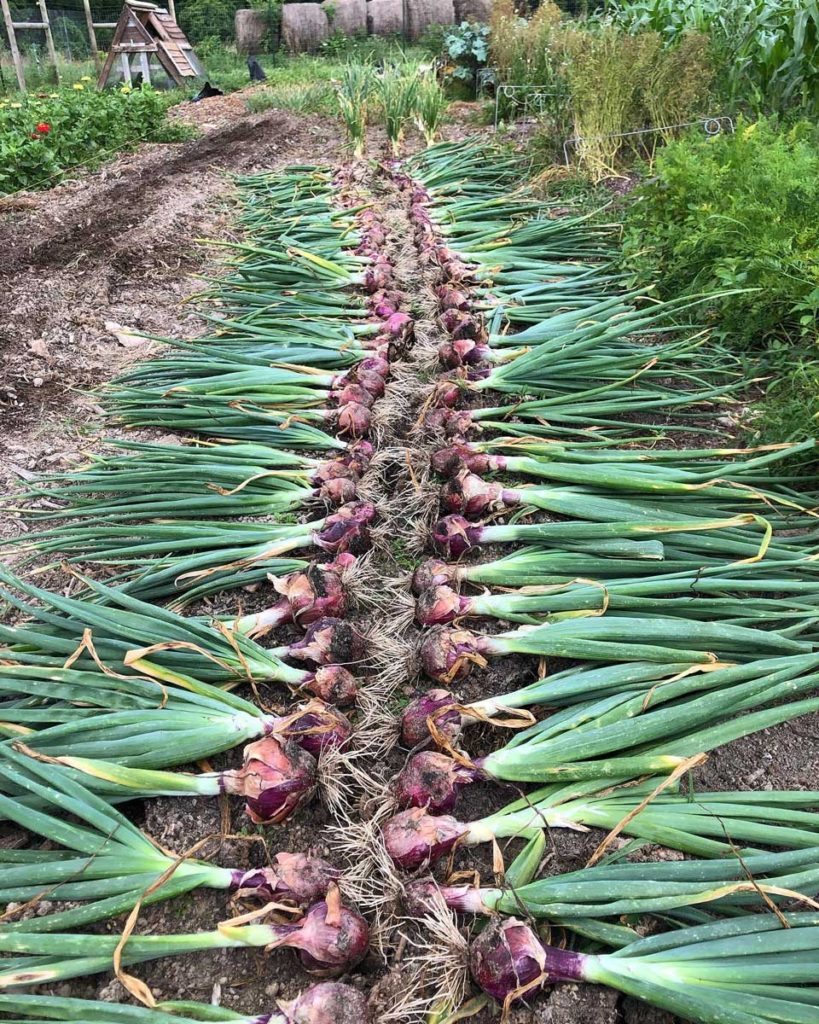
Onions can also be grown from seeds. More detailed information on how to grow onions can be found HERE.
Options for bulb onions are sweet onions for fresh eating, yellow, white, and red onions. Onion tops and green onions are a great option for a pizza garden too.
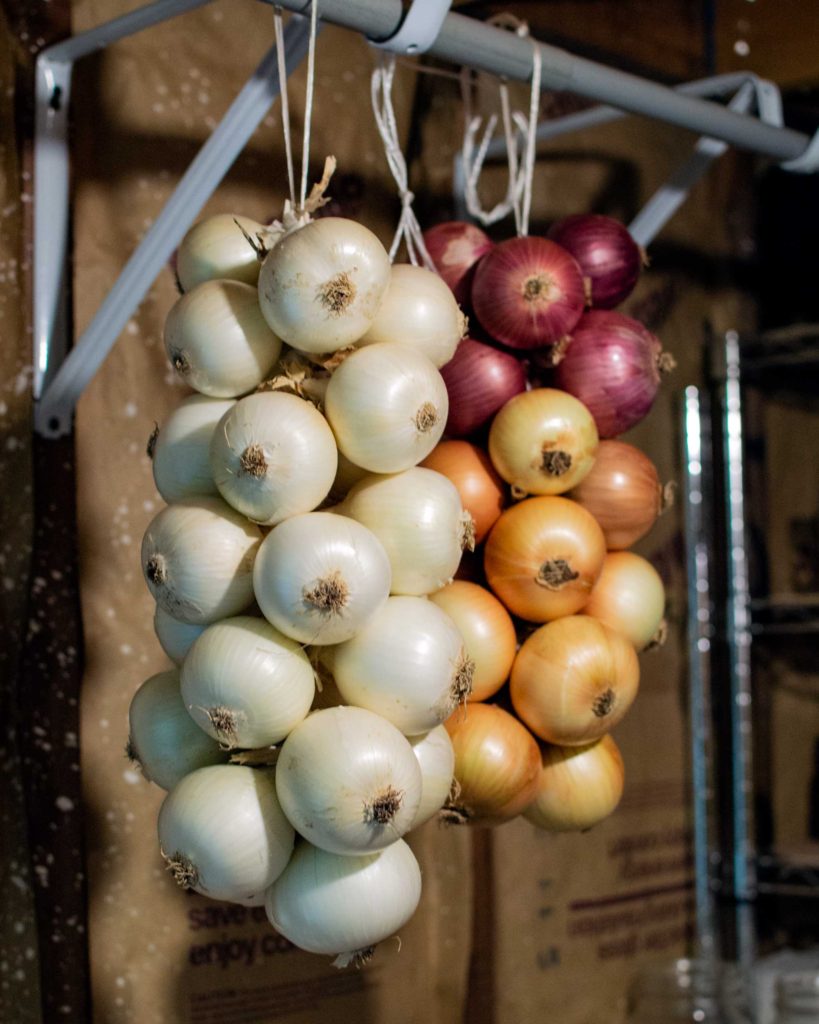
Recommended varieties: Alisa Craig Onion (sweet and mild but doesn’t store more than a month), Rossa Di Milano (red), New York Early (yellow).
Arugula
Generally, when the plant is around 2-3 inches tall, it’s prime harvesting time. If you like more spicy notes, wait until it’s taller than 3 inches to harvest. We first had arugula on our pizza when at a local pizza restaurant. We started adding it to ours and now it’s a must have topping on pizza night.
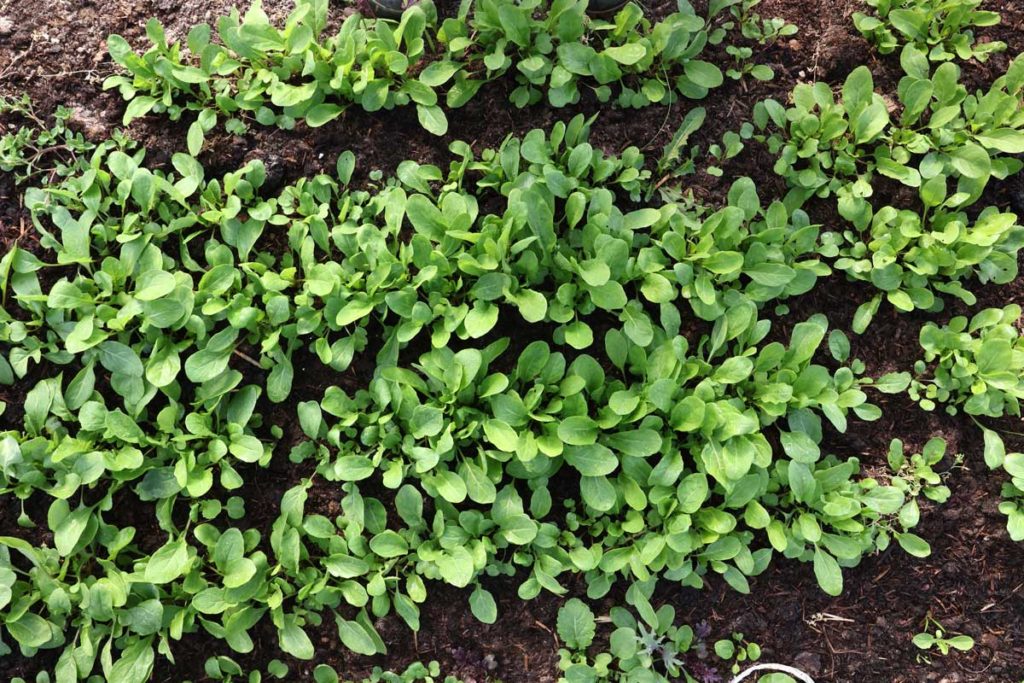
Arugula is easy to grow with seeds. Simply make a trench about a quarter inch deep and place seeds in it. Alternatively, broadcast seeds and then rake.
Recommended varieties: Astro
Spinach
Spinach is a cool weather crop that is a little bit difficult to grow from seed. If you want to start your pizza garden extra early in spring, or have it extend into fall, spinach is a delicious option.
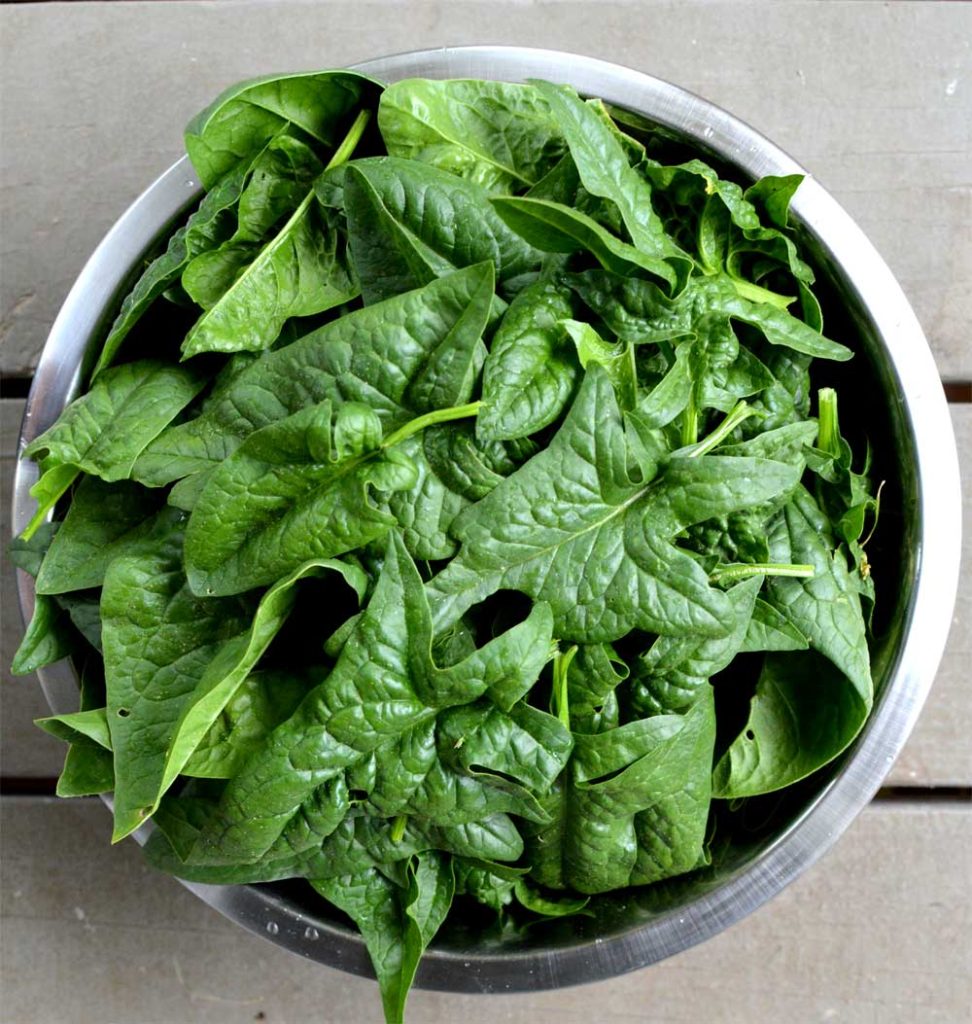
Recommended varieties: Bloomsdale Long Standing
Kale
An alternative to spinach is kale. Kale is very easy to grow from seed and unlike spinach it will grow through summer. However, it really grows best in spring or fall.
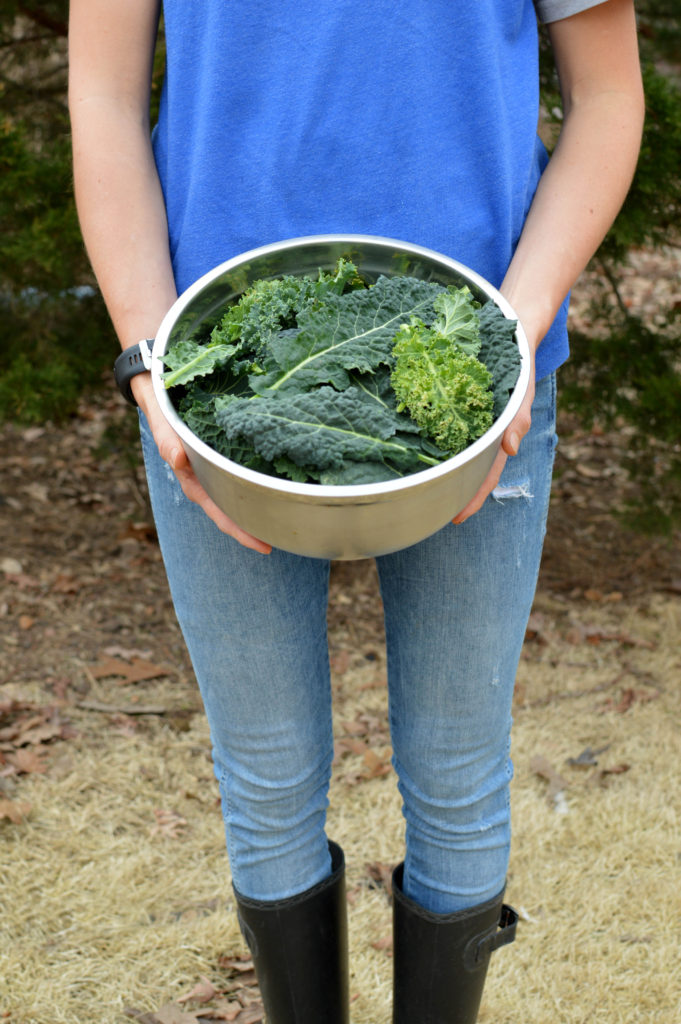
Our favorite way to prepare kale for a pizza is to remove the stems, chop it small, then put it in a baggie with oil and a tiny bit of salt until everything is covered. Then put it on the pizza as a topping and it makes the most delicious kale chips on top of the pizza! So yummy.
Recommended varieties: Meadowlark Kale
Tomatoes
One of the most popular ingredients on a pizza is tomatoes to make sauce. If you’ve never made a fresh pizza sauce with roasted garlic, basil, tomatoes, a little salt and pepper before… you have to try it! It’s so different and so delicious!
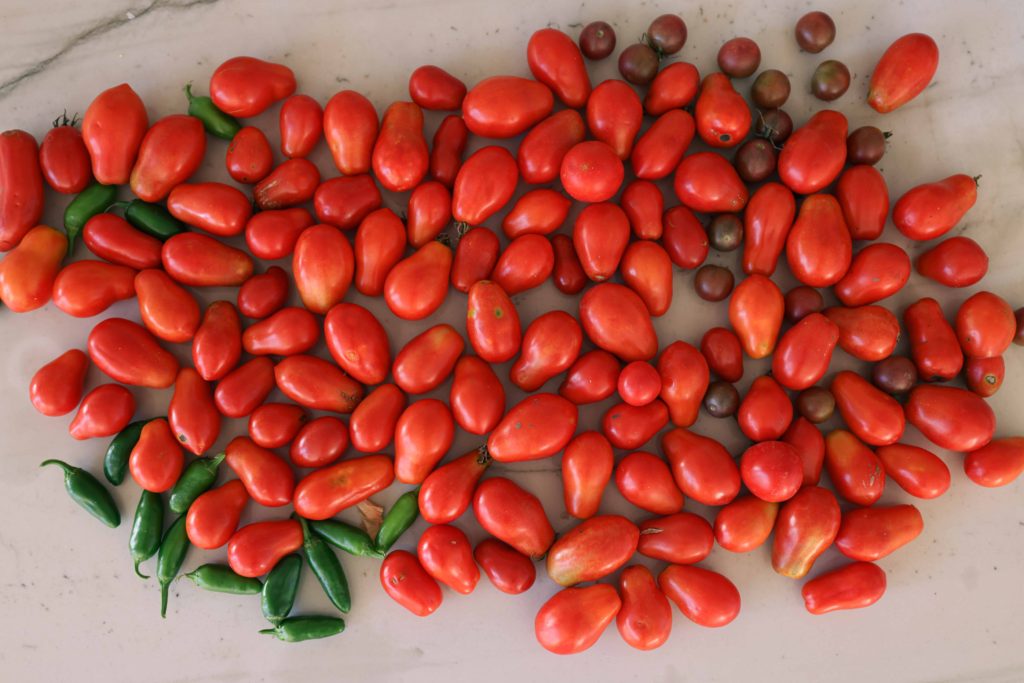
Tomatoes should be planted after all danger of frost has passed.
Recommended varieties: Roma VF and San Marzano both are paste types.
Peppers
A sweet pepper is a common and delicious pizza topping! The ideal peppers for this are bell peppers with thick flesh. Peppers take a very long time to mature so be sure to pick a variety that works for your area.
Similar to tomatoes, peppers love heat and need to be planted after the last frost.
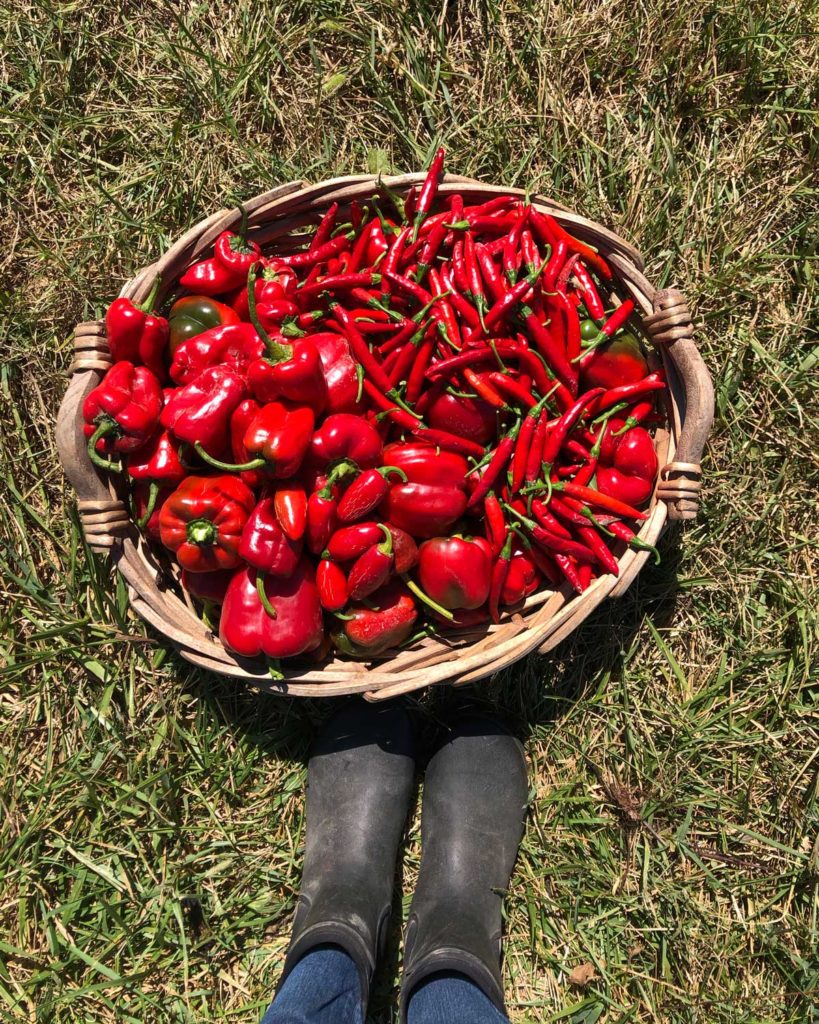
Recommended varieties: King of the North or Carmen (this one is not a bell pepper but it’s super sweet, delicious for snacking and chopped up for a pizza)
Garlic
If you really want to take your pizza garden to the next level consider growing garlic! Garlic is planted in the fall for a summer harvest. So this crop takes a little planning ahead. Fresh roasted garlic is a delicious addition to pizza sauce.
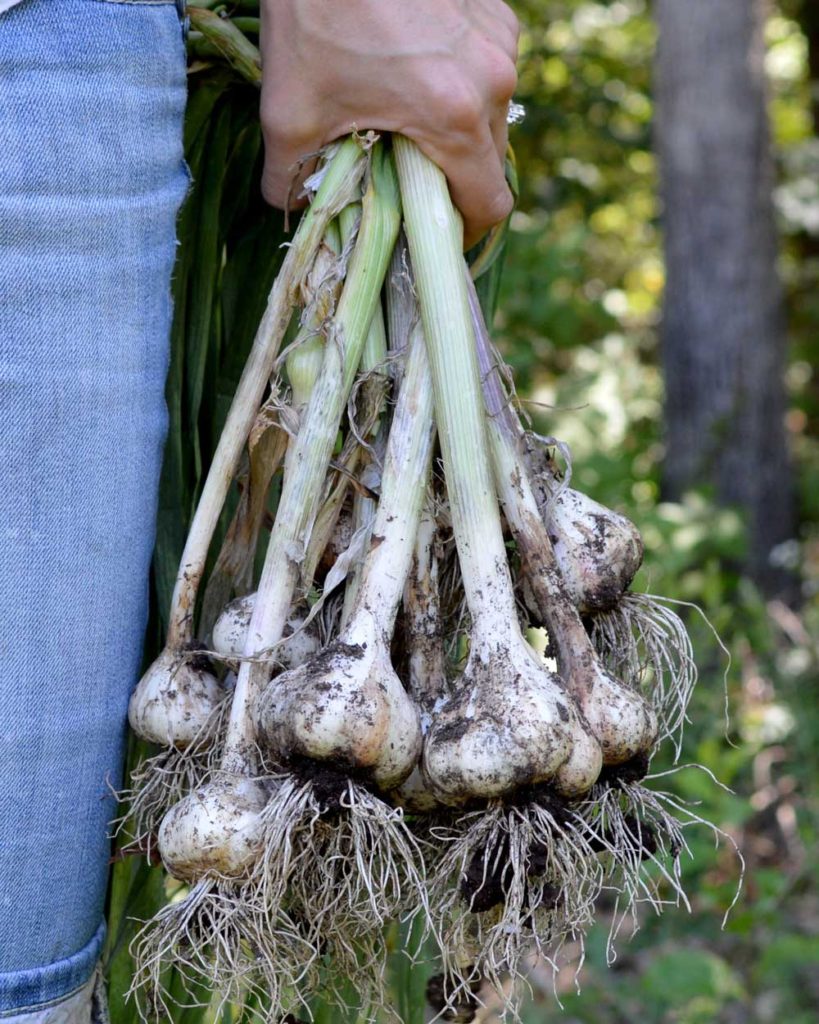
Recommended varieties: Music (Hardneck for zones 7 and below) and California White (Softneck zones 7+)
Oregano
Oregano is actually easy to grow from seed, but if you just need one plant it might be more economical to purchase one at a garden center. It keeps growing all summer long and if you’re in a warmer area, will come back again for several years.
Recommended varieties: Greek
Best Location for a Pizza Garden
The best location for a pizza garden is in full sunlight, or at least 8 hours of sun per day. Tomatoes and peppers need full sun to thrive. Basil, onions, spinach, and kale will still produce well with six hours or more of sun per day.
Choose a location that is easy to access, close to a water source, and close to your home if possible. You can find more information on how to choose the best location for a garden HERE.
How to Grow a Pizza Garden
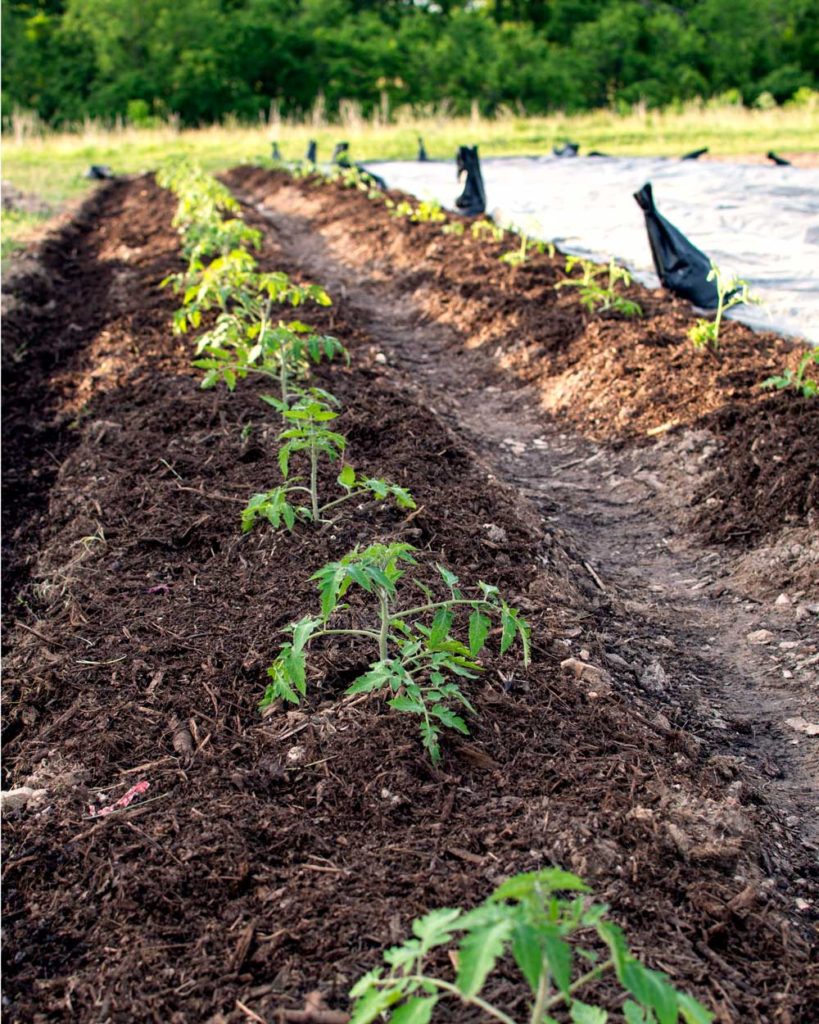
Whether you’re growing in soil, raised beds, or containers the method for having success with growing vegetables is the same.
- Take a soil test if you haven’t yet. The best professional soil testing kit can be found HERE. Note: if growing containers or raised beds with ONLY organic matter like compost, peat moss, coconut coir, leaves, manure. You should not soil test. There is no soil in your mix to test and it will be a waste of money for you. If you actually have soil in your mix, I highly recommend soil testing. Soil has minerals and nutrition that plants and our bodies need.
- Adjust your soil based on the recommended results. A good kit will tell you exactly what you need to add and how much.
- Add compost. Tomatoes, peppers, garlic, onions, and pretty much every plant in a pizza garden will benefit from the addition of a high quality compost.
- Set up water. It’s ideal to have water all set up and automatic. If that’s not an option, water by hand deeply every 2-3 days (more or less depending on heat and rain)
- Plant high quality starts, whether from seed or transplants
- Monitor nutrition needs, usually about halfway through the growing season we add more organic fertilizer to tomatoes and peppers.
- Harvest when ripe.
Timing Plants to be Ready for Harvest at the Same Time
The practical size of growing a pizza garden is that your vegetables need to be ready mostly all at once! Let’s break down how to do this:
First, you need to understand that each plant grown has a certain “number of days to maturity”. This is the number of days until the plant begins to fruit or is ready to be picked. Days to maturity is not exact from year to year due to weather fluctuations. However, a date range estimate of when a plant is ready to harvest can be made.
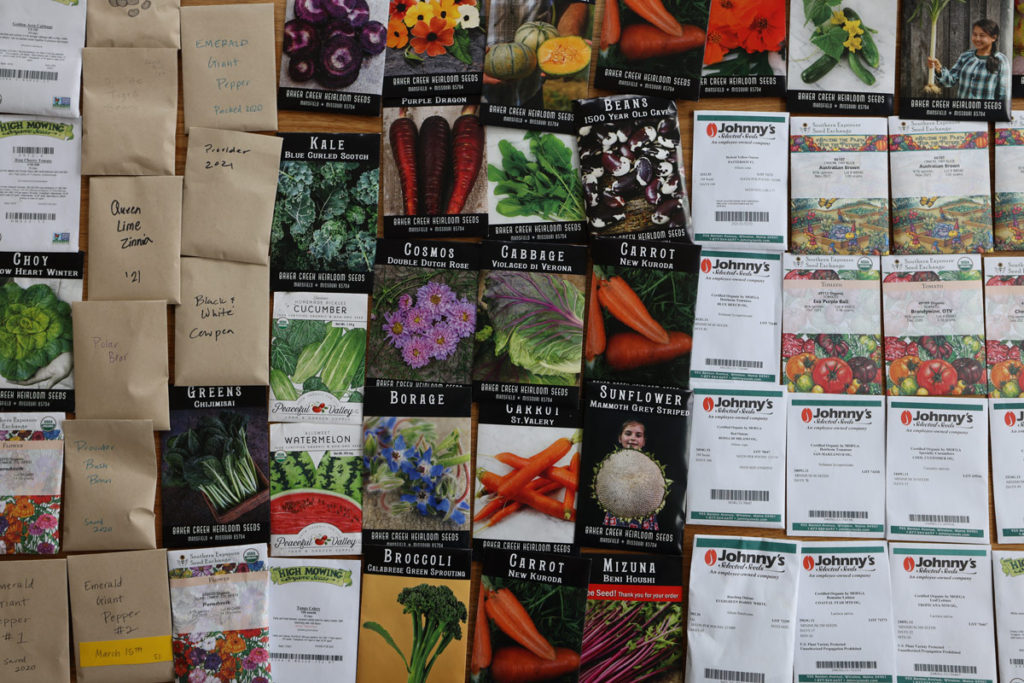
- Arugula has 20-50 days to maturity. This means it needs to be planted later in the growing season to time it the same time tomatoes and peppers are ready.
- Roma and San Marzano Tomatoes are ready about 80 days after transplanting. Plant at the same time as your peppers.
- Peppers like Carmen and King of the North are 80 days until red peppers mature. Calculate out 80 days past transplanting this is about when they are ready to pick.
- If garlic is planted in the fall, it will be ready for harvest around mid summer. If the garlic is ready prior to other vegetables being ready this is OK. Harvest garlic and hang it to dry.
- Onions are another plant which if planted in early spring will bulb by mid summer. It doesn’t have to be exact on timing unless you are growing a variety that doesn’t store well. Even then, fresh eating onions will last a few weeks.
- Herbs like oregano are ready to harvest all season long.
- Basil has a shorter harvest window of when the herb is in prime condition, but by pinching flowers harvest can go on much longer.
Sample Planting Schedule
Below you’ll find a realistic look at when to plant so the tomatoes, peppers, basil, oregano, arugula, and kale are ready to harvest all at once. Onions and garlic will be harvested and cured prior to when the rest of the plants are ready. Spinach would be harvested towards the end of the growing season.
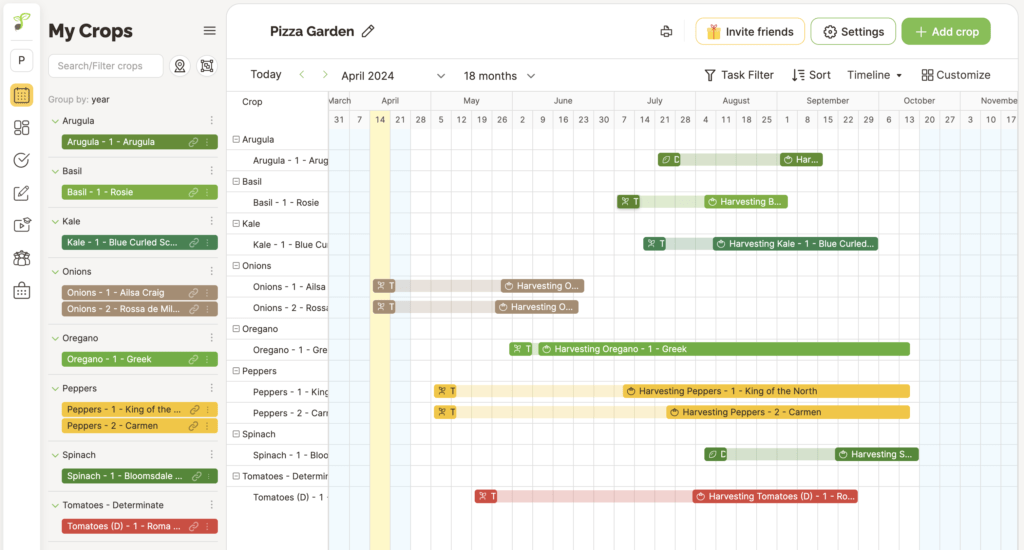
- NOVEMBER 1- Plant Garlic
- APRIL 1- Transplant Onions
- MAY 6- Transplant peppers, tomatoes, and oregano
- JULY 8- Transplant basil
- JULY 18- Transplant kale
- JULY 21- Direct seed Arugula
- SEPTEMBER 1- Transplant Spinach
Note: When purchasing from a garden center they only sell vegetables for a short period of time. You’d need to buy and plant everything at nearly the same time. Your pizza garden wouldn’t be ready all at once but you’d get to enjoy a few vegetables at a time.
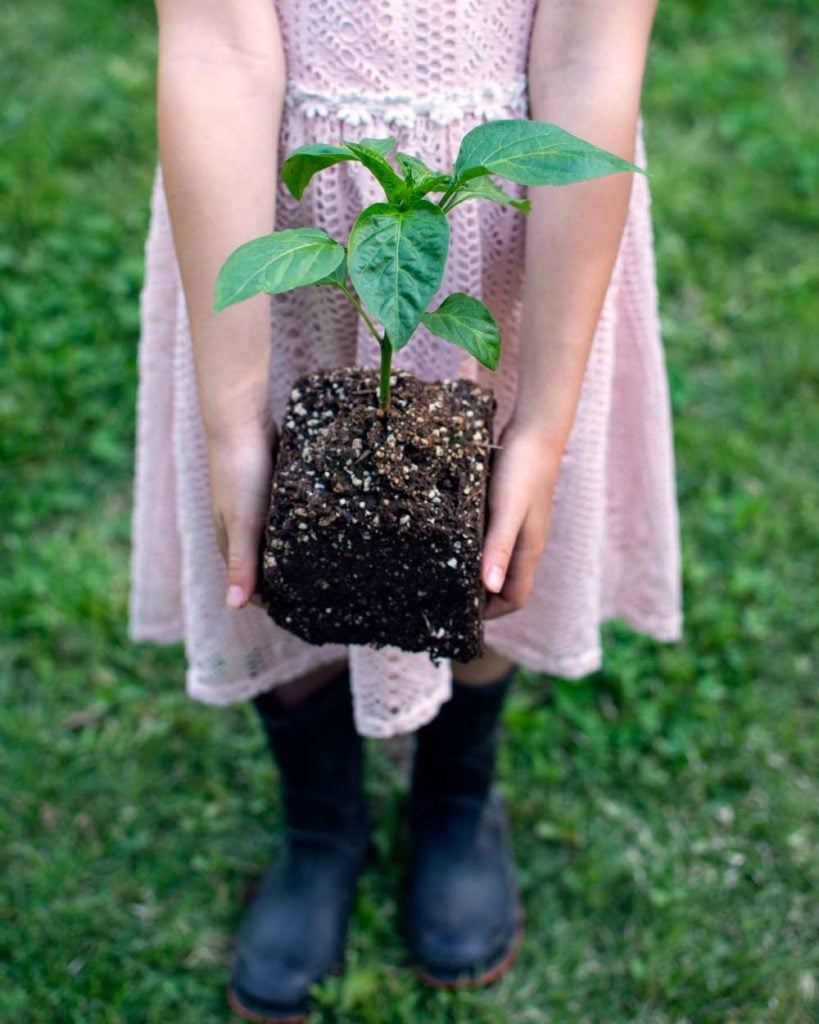
If you’re growing from seeds, you allow a little more flexibility in when you can plant. I have guides starting seeds indoors HERE and starting seeds outdoors HERE.
Pizza Garden– Plant Spacing
Plant spacing is referring to the distance between plants of the same vegetable. In a raised bed, or with intensive spacing, plants should be spaced the distance listed in all directions.
Tomatoes: 2 feet
Peppers: 18 inches
Onions: 6 inches
Kale: 12-18 inches
Arugula: 2 inches
Garlic: 6 inches
Pizza Garden- Sample Layout
Below you’ll find a sample layout. This is made with the layout feature in Seedtime. Seedtime is so fun to use! If you haven’t tried it yet, you can check it out HERE.
Each of the gardens below is 4 feet by 8 feet in size.
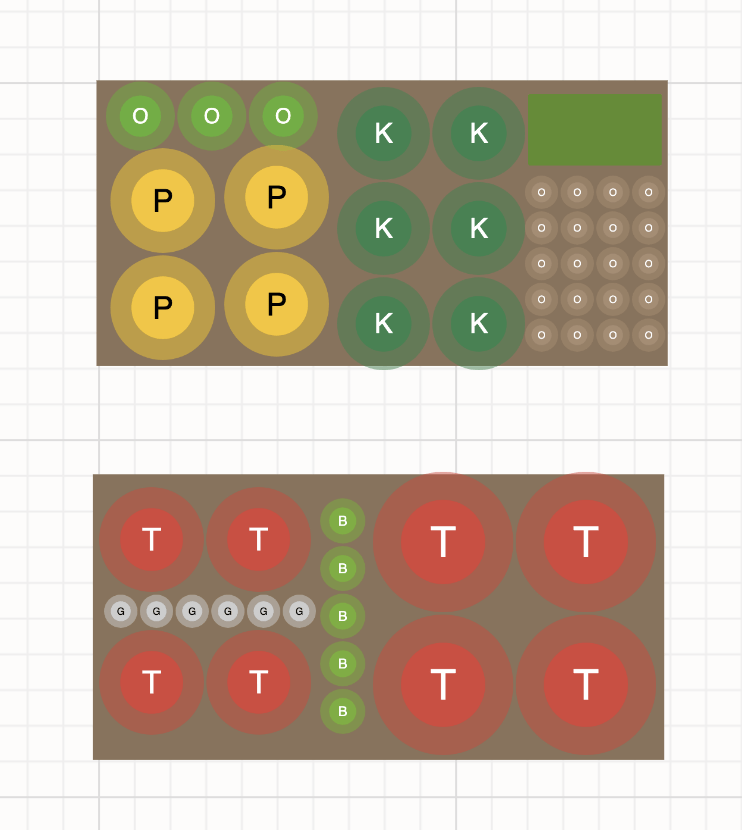
Summary
I hope this guide to how to grow a pizza garden helps you get an amazing harvest. And in turn, you get delicious farm to table pizzas!

4 comments
What a nifty little machine that is….and now I’m craving pizza for breakfast 😋
Haha!
Also as you’re a fan of kimchi, have you tried pairing it with your pizzas? I always pull out the kimchi when there is cheese or grease to be cut through.
I haven’t but that is a good idea! I hadn’t thought of that before.